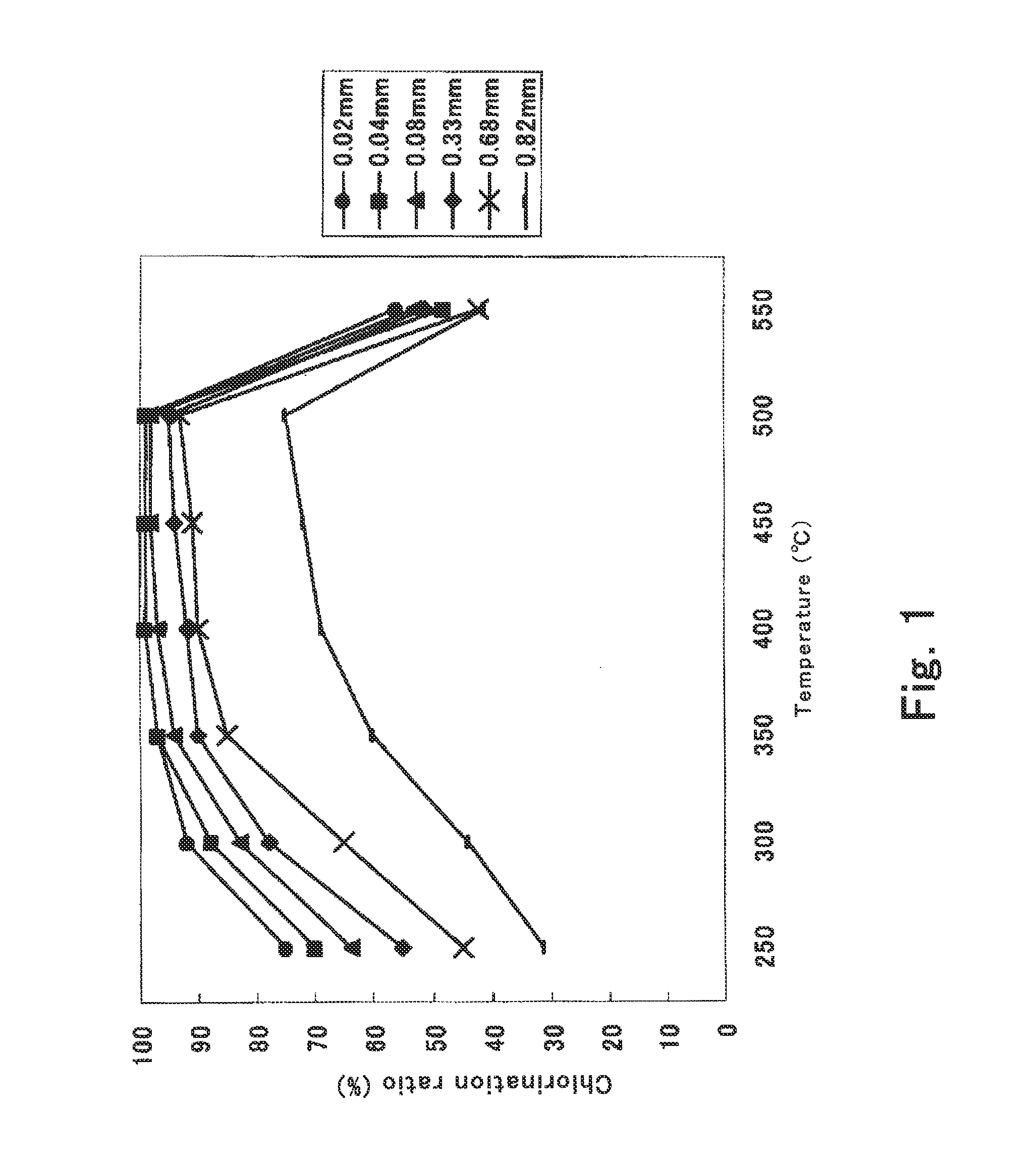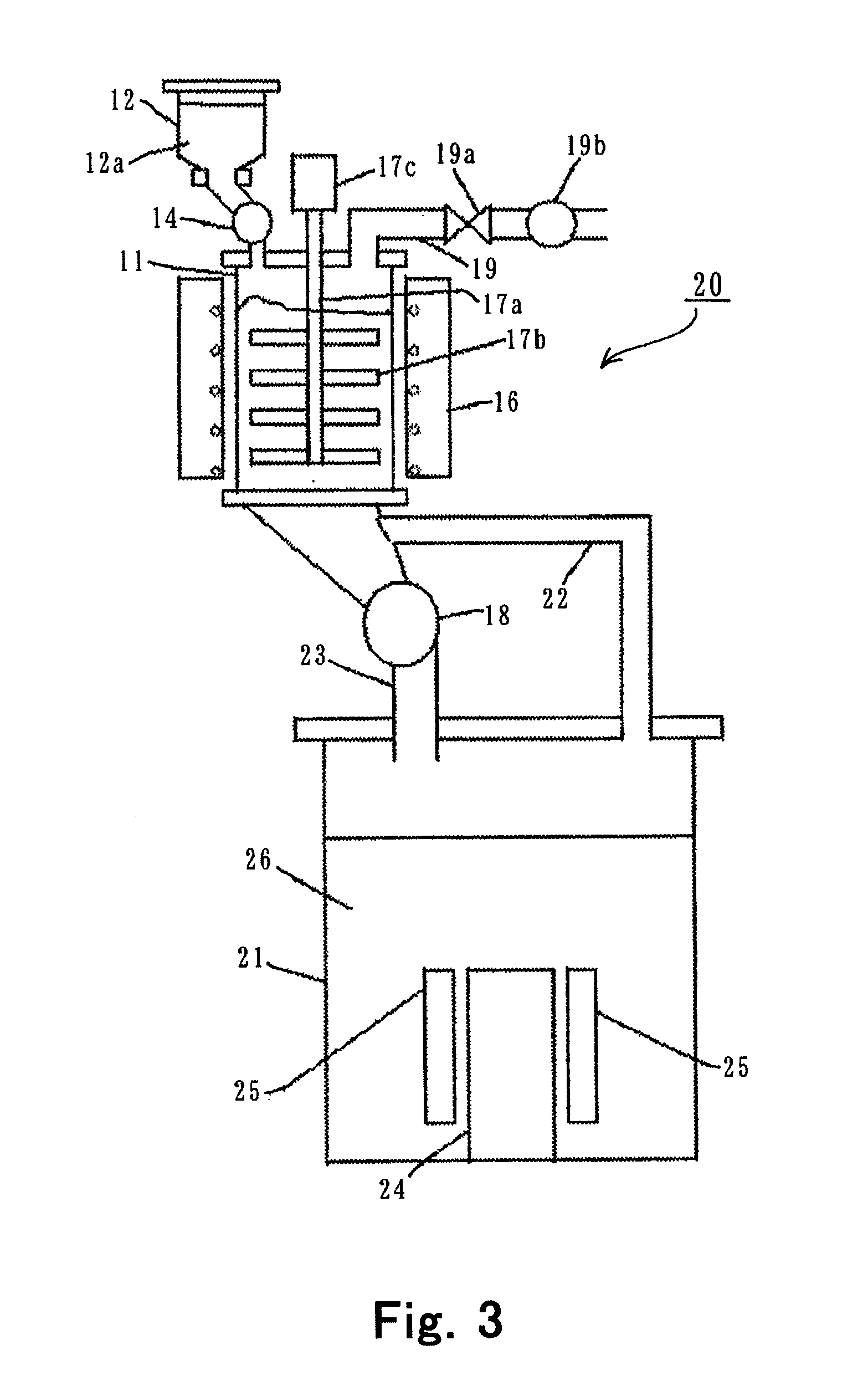Process for producing metallic lithium
a technology of metallic lithium and electrolysis, which is applied in the direction of lithium halides, etc., can solve the problems of imposing severe limitations on the materials which may be used for the reaction vessel or the piping, requiring additional costs for operation and facility, and facilitating the production of anhydrous lithium chloride. , the effect of excellent safety and efficient production
- Summary
- Abstract
- Description
- Claims
- Application Information
AI Technical Summary
Benefits of technology
Problems solved by technology
Method used
Image
Examples
production example 1
[0070]Using the system 10 shown in FIG. 2, anhydrous lithium chloride was produced according to the following process.
[0071]Lithium carbonate in powder form of D90=0.04 mm was provided, kneaded with water, and granulated in an extrusion granulator. The granulated powder was dried to the moisture content of 0.3 mass %, to thereby obtain lithium carbonate 12a in granular form having the particle size distribution in the range of 0.8 to 1.2 mm.
[0072]Next, the lithium carbonate 12a was chlorinated with 3N chlorine gas supplied from the chlorine gas cylinder 13. The reaction vessel 11 was heated with the electric furnace 16 to create an area of 400° C. to 500° C. over about 1000 mm, wherein the chlorinating reaction was effected. The velocity of the moving bed was adjusted so that the residence time of the lithium carbonate 12a in this temperature area was not shorter than 2 hours. During the reaction, the supply rate of the lithium carbonate 12a from the hopper 12 was 3.5 kg / h in averag...
example 1
[0074]In the system 20 shown in FIG. 3, anhydrous lithium chloride was produced in accordance with the following process.
[0075]The lithium carbonate 12a was produced in the same way as in Production Example 1.
[0076]In the cell for lithium electrolysis 21 in the system 20, molten salt electrolysis was performed at the current of 10 kA and at the temperature of 460° C., using an electrolyte composed of 35 to 45 mass % lithium chloride and 55 to 65 mass % potassium chloride, as the electrolyte 26. Production Example 1 was followed, except that the chlorine gas generated by the electrolysis was transferred to the reaction vessel 11 through the chlorine gas transfer line 22, and the chlorination reaction of the lithium carbonate 12a was carried out with the velocity of the moving bed being adjusted so that the residence time of the lithium carbonate 12a in the area at 400° C. to 500° C. was not shorter than 4 hours. During the reaction, the supply rate of the lithium carbonate 12a from t...
PUM
| Property | Measurement | Unit |
|---|---|---|
| temperature | aaaaa | aaaaa |
| temperature | aaaaa | aaaaa |
| particle size | aaaaa | aaaaa |
Abstract
Description
Claims
Application Information
 Login to View More
Login to View More - R&D
- Intellectual Property
- Life Sciences
- Materials
- Tech Scout
- Unparalleled Data Quality
- Higher Quality Content
- 60% Fewer Hallucinations
Browse by: Latest US Patents, China's latest patents, Technical Efficacy Thesaurus, Application Domain, Technology Topic, Popular Technical Reports.
© 2025 PatSnap. All rights reserved.Legal|Privacy policy|Modern Slavery Act Transparency Statement|Sitemap|About US| Contact US: help@patsnap.com



